Upcoming seminar on teaching intermediate to early advanced students through story telling If you live anywhere near Dunedin, New Zealand, I would love to invite you to join me in the IRMTNZ National Conference, from the 21st -25th, January 2019. I am superpsyched to be presenting in the upcoming IRMTNZ Conference on the 22nd of January, 2019, at 2.50pm. This time I want to share how to engage and motivate students to love… Sonatinas! Here is the title and description of my session: From Sonatina to Cinderella: enhancing expressive playing through story-telling Classical Sonatinas can be perceived by students as old-fashioned and dull. In this session, Melody will use the findings in her recent Master’s research to demonstrate how to incorporate story-telling, modelling and other pedagogical tools to help students engage with the Classical repertoire. She will show how to formulate seemingly unimaginative genres into animating fairy-tales or superhero chronicles, at the same time taking a holistic approach to developing technique, theory and musicianship. Intrigued? Read on to find out more! Any piano teacher of the 21st century would be well aware that Classical Sonatinas may not be the favourite genre of music to learn and play in your studio. There are always the exceptional few that love playing them as much as the next piece, but chances are, most students tend to learn them because “the teacher said I had to do it”, and the remaining few will defiantly avoid the genre at all cost. I once asked a 12 year old student why he didn’t learn the notes of a the new piece for that week, and he said, “I didn’t like the sound of it. It is really old- fashioned.”. Yep, you guessed it, the piece was a Sonatina. So why do some students perceive these mini classical gems as old- fashioned and dull? And is it possible to formulate these seemingly unimaginative genre of music into something kids find exciting to play? In this seminar I am here to explore some answers. First of all, I want to start by saying that I love the Classical Sonatinas and Sonatas. Out of all the genres in Western Classical Music, I just “get” the Classical pieces more than others. Maybe it is because I could always see myself fangirling Mozart if I lived in the 1800’s, or perhaps I just associate them with all the witty and handsome Austenian characters. I am definitely not impartial when it comes to the charm of the music of the Classical Period. Possibly it is my own biases, but I really do think that Sonatinas are indispensable pedagogical pieces for any budding pianists wanting improve their skills and musicianship. Below are just some of the benefits of learning and playing Sonatinas:
As a teacher, I really do not see how it is possible for students to advance smoothly to something like the Pathétique Sonata without having gone through at least two dozen Sonatinas and “entry level” Sonatas. So here are some of the reasons I thought of that might be hindering student’s enthusiasm towards these pieces, compared to the more “popular” genres:
Now, we cannot control what kids are exposed to outside of their piano lessons, but what we can do is to help kids relate to the music they initially find boring and difficult to understand, and turn them into something they can appreciate and love. The beauty of a Sonatina is that because the titles are all the same, we can help children interpret them into a narrative their imagination can fathom and discover. When they can do so, you can instantly see their eyes brightening up and faces starting to beam, as they find themselves suddenly able to bring to life, a previously monotonous scale passage because it is now a part of a meaningful story. Even the same piece of Sonatina can be tailored to suit each individual student.
In this upcoming seminar, I will demonstrate how I help students to create their own exclusive story lines to help them connect with the music, as well as tips on how to use storytelling to improve technique and enrich their theoretical knowledge. I will also include a “fool-proof” guide to help teachers find the most engaging narrative for individual students. Head to the conference website to register: https://www.ivvy.com.au/event/IRMT19/home-page.html A video of my seminar and handouts will be available on my website after the conference – look out for future updates on the blog! Melody
0 Comments
A Creative Piano Teaching Activity to Encourage Productivity I have a studio of about 40 students, with a wide range of ages and abilities, and on the whole are an absolute pleasure to teach. I have been building the studio across the last 10 years with an aim to cultivate a balance between work ethic and creativity in my students as well as modelling these traits within my own teaching. Most students of mine practice at least six days a week and learn large numbers of pieces per year. Beginner students complete 80-100 pieces a year, and intermediate students complete 30-50 pieces a year depending on their level of playing. I think it is safe to say my students are all passionate about learning new music! Read more about the 40 piece challenge on Tim Topham's blog! One of the biggest challenges I face as a teacher with students working on a lot of new repertoire is that many students attempt to learn a little too fast, getting caught up in the excitement and novelty of learning new music each week. The consequence of this is we end up spending a lot of the lesson time pointing out the mistakes the students have made in their learning. Silly, clumsy mistakes they can absolutely avoid if more care was taken in their practice. Some common note learning mistakes include: not noticing rests, wrong notes and rhythms (in seemingly straight-forward pieces), blatantly ignoring simple articulation and musical directions and so on. Furthermore, because the students are eager practicers, when they have learnt something incorrectly and practiced it incorrectly for an entire week, the well-practiced mistakes have sunk in so well in their memories that it takes us a painstakingly long time to correct them. Creative Piano TeachingBeing a teacher who believes the best changes come from the individuals themselves, I wanted to find a creative piano teaching exercise to encourage the students to be more mindful when learning new notes, not because I asked them to, but because they wanted to. With all going to plan, we can then use the valuable lesson time to improve the more creative and enjoyable aspects of learning, adding character and expression to the music.
Student of the Week Shortly afterwards, the Student of the Week Challenge was born. The rules were simple: any student who learns their assigned piece(s) in one week, hands together, with correct notes and rhythm, gets their picture snapped holding two of their chosen photo props. We then stick the photos on a Student of the Week poster on the studio wall, so everyone who comes into the studio will be able to see their achievements! Here is the poster I designed and printed: Initially, I had no idea how many students would achieve the Student of the Week each week, and therefore how much the poster was going to get filled up. In fact, I was clueless as to whether the children of 2018 would even find Polaroid cameras cool! In week one of the school term, I explained to all the students in their lessons what the challenge is about, and gave them strict instructions to make sure they learn the piece carefully so they get their pictures snapped the next week. I also gave them tips on HOW to ensure they learn the correct material from the first day:
Students and parents are delighted to be a part of this experiment and we all get a giggle and a cheer when a student picks up the photo props and strike a cheeky pose! Many students were absolutely enchanted by the ‘magic’ of the Polaroid camera. Some of them wouldn’t believe me when I told them the picture would appear after a few minutes. One even thought the Polaroid took a better picture than his mum’s iPhone, which his mum and I both found hilarious. I was really impressed by the number of students that came in the following weeks with significantly more effort put into learning their pieces correctly, especially considering that in the past these same students would make a couple of unnecessary mistakes in every new piece they learnt. Here are some more happy snaps: The Result... At the end of the term, our poster was absolutely filled with cheerful portraits! Overall I am really happy with how this experiment went, and here are some thoughts on it at the end of this term:
|
AuthorThis blog post is by Melody Deng Archives
September 2020
Categories
All
|
|
©2019 East Coast Bays Piano Studio | All Rights Reserved
|

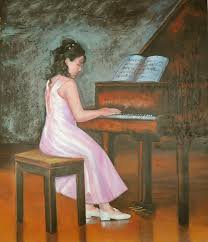

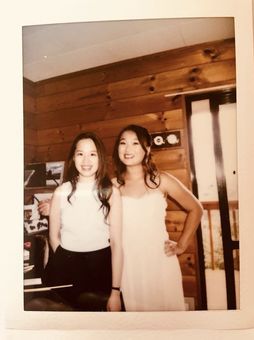
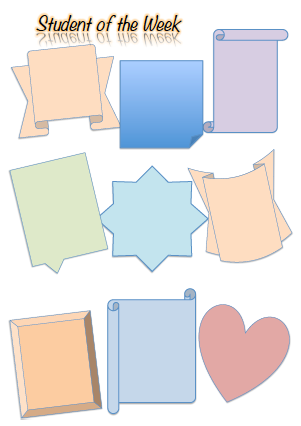
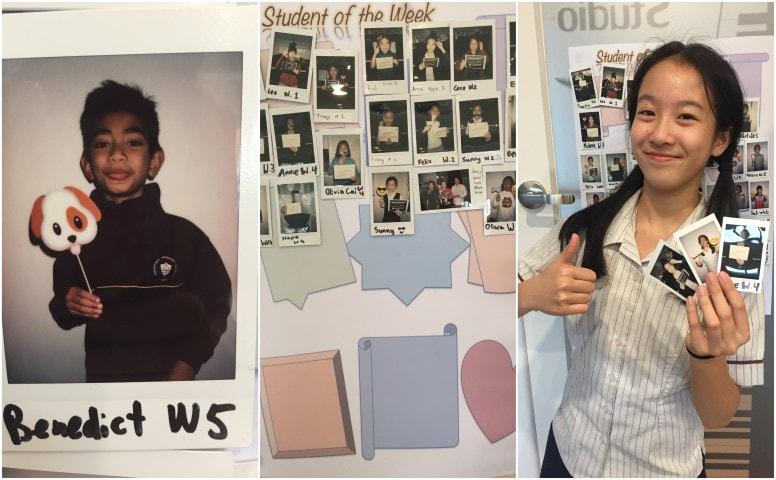
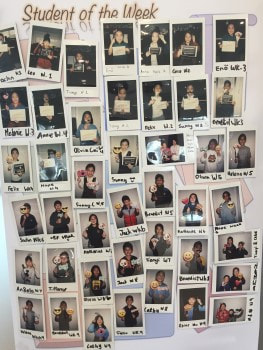
 RSS Feed
RSS Feed